Chemistry and Chemists № 3 2025
Journal of Chemists-Enthusiasts
| Content | Chemistry experiments - video | Physics experiments - video | Home Page - Chemistry and Chemists |
|
Chemistry and Chemists № 3 2025 Journal of Chemists-Enthusiasts |
Dissolving Mollusk Shells in EDTA - pt.1, 2 Chemist |
|
Having noticed a mistake in the text, allocate it and press Ctrl-Enter
Trilon B, Ammonia, and Mollusk Shells - Part 1
Ethylenediaminetetraacetic acid (EDTA) is a tetrabasic acid that forms strong complexes (chelates) with di-, tri-, and polyvalent metal cations. For example, EDTA forms complexes with calcium, magnesium, iron, aluminum, zinc, copper, and other metals. Because of this, EDTA is widely used in analytical chemistry for metal analysis by complexometric titration.
Растворение раковин моллюсков в ЭДТА Трилон Б, аммиак и раковины моллюсков - Часть 1 The ability of EDTA and related compounds to form chelates with metals is also widely used in engineering. EDTA is primarily used to soften water and to prevent the formation of hard deposits in heating systems caused by hardness salts. By binding calcium, magnesium, and iron into highly soluble complexes, EDTA prevents scale formation in pipes and equipment. Due to its ability to form strong chelates with metals, EDTA is also used in detergents, cleaning products, and cosmetics. It is even employed as a food additive to extend the shelf life of canned foods. Some metal ions catalyze undesirable processes in foods; by binding these metals into strong complexes, EDTA slows food spoilage. EDTA itself is poorly soluble in water, so it is usually used in the form of its disodium (EDTA-2Na) or tetrasodium (EDTA-4Na) salts, which are known under the trade name *Trilon B*. The disodium salt is moderately soluble in cold water and highly soluble in hot water; its solution has a slightly acidic pH (approximately 4.5-5.5). The tetrasodium salt is much more soluble in water and forms a strongly alkaline solution. In analytical chemistry, the disodium salt (EDTA-2Na) is most commonly used. I became familiar with it many years ago, at the very beginning of my graduate studies. My dissertation work required hundreds of titrations, primarily performed by the complexometric method. But I encountered the tetrasodium salt twenty years later. The task was to convert the disodium salt, EDTA-2Na, into the free acid, which was needed for the synthesis of new surfactants. I dissolved a sample of the disodium salt and added the calculated amount of hydrochloric acid. No precipitate of the acid form of EDTA appeared. Then I dissolved a new portion of the original *Trilon B* in water and measured the pH of the solution — it was above 10. Instead of the disodium salt, we had been sold the tetrasodium one. To precipitate EDTA crystals, I had to add twice as much hydrochloric acid. Until then, I had not even realized that EDTA-4Na existed or was used so widely in industry. Adding a solution of sodium EDTA-2Na or EDTA-4Na to water prevents the precipitation of hardness salts — mainly calcium and magnesium carbonates, as well as calcium sulfate. This prompted an interesting question: if I do the opposite, and add a solution of disodium EDTA to solid calcium carbonate, will *Trilon B* dissolve the calcium carbonate? Based on theoretical considerations, the answer should be yes. Calcium carbonate should dissolve in *Trilon B*. Now it remained to test this assumption experimentally. Reagent-grade calcium carbonate powder was available in the laboratory. However, I decided to use mollusk shells instead of pure calcium carbonate — such an experiment would be more visually demonstrative. Mollusk shells are composed of calcium carbonate bound with organic matter. Dissolving a white powder in a colorless liquid might seem boring to most people, unlike watching shells dissolve. I collected several shells on the banks of the Dnipro River specifically for this experiment. While looking for a jar of *Trilon B* (EDTA-2Na), I happened to spot a package labeled "Trilon B." Suddenly, I remembered where it came from: a customer had brought it in once, asking for advice — about rocket fuels. He had been told that this *Trilon B* was: > "A new secret rocket fuel oxidizer(!)" At first, I was astonished, but then I realized what had happened and assured him that he had been misled. *Trilon B* is not used as an oxidizer — certainly not as an oxidizer for rocket fuel. To save time searching for the reagent, I took *Trilon B* from that package and prepared a 6% solution. I measured the pH with indicator paper; it was about 4-5. It looked like EDTA-2Na. Then I began to doubt it. Since the customer had once been deceived by being told that *Trilon B* was an oxidizer, he might have been deceived again — someone could have filled the bag with another substance altogether. I poured the solution away. Then I found a jar of verified reagent-grade *Trilon B* and prepared 50 ml of a 6% solution. The pH of this solution was also 4-5. When the Ca2+ cation forms a complex with EDTA-2Na, hydrogen ions are released: Ca2+ + Na2H2EDTA = Na2[Ca(EDTA)] + 2H+ Therefore, in an alkaline solution, the equilibrium shifts to the right. In other words, adding alkali to the solution favors complex formation. For example, titration of calcium and magnesium ions is carried out in the presence of an ammonia buffer solution (pH > 9). Hence, I added 1 ml of concentrated ammonia solution to 50 ml of the prepared 6% EDTA-2Na solution. I poured the resulting solution into a beaker and placed three freshwater mollusk shells in it. Time passed, but no noticeable dissolution of the shell material occurred. Three days later, I added another 50 ml of the 6% EDTA-2Na solution and 15 ml of concentrated ammonia solution. After another 24 hours, no obvious signs of dissolution were observed. The solution turned yellow, possibly indicating partial dissolution of calcium carbonate on the surface and release of the organic binder. However, the surfaces of the shells showed no visible change. Theoretically, calcium carbonate should dissolve in EDTA. What could be the reason for this negative result? |
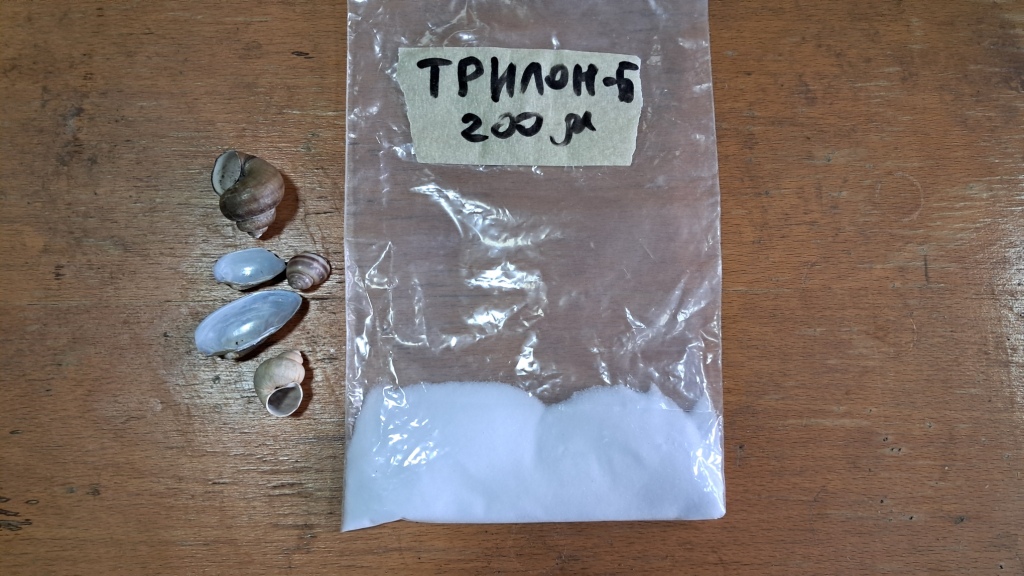
Trilon B, Ammonia, and Mollusk Shells |
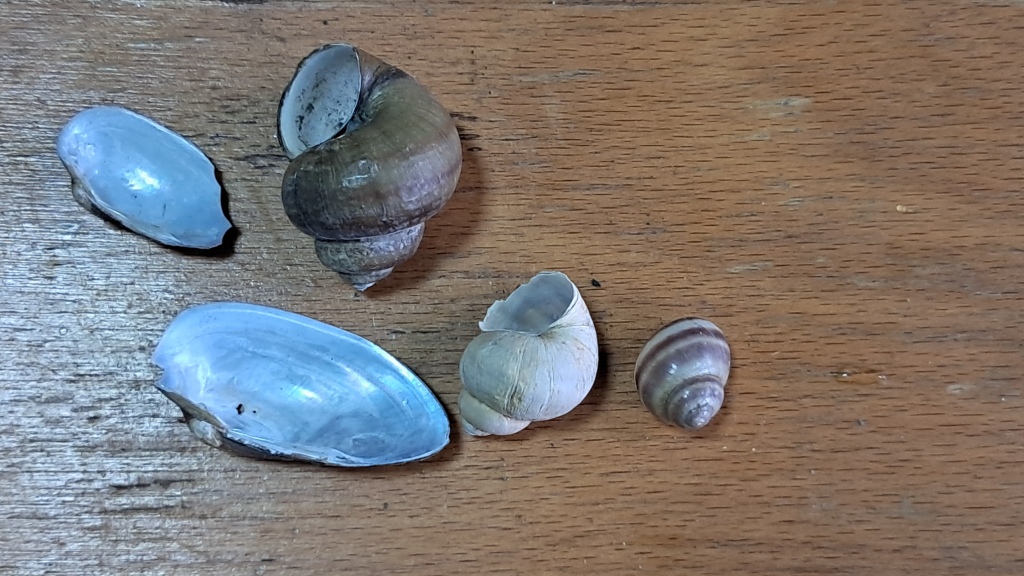
|
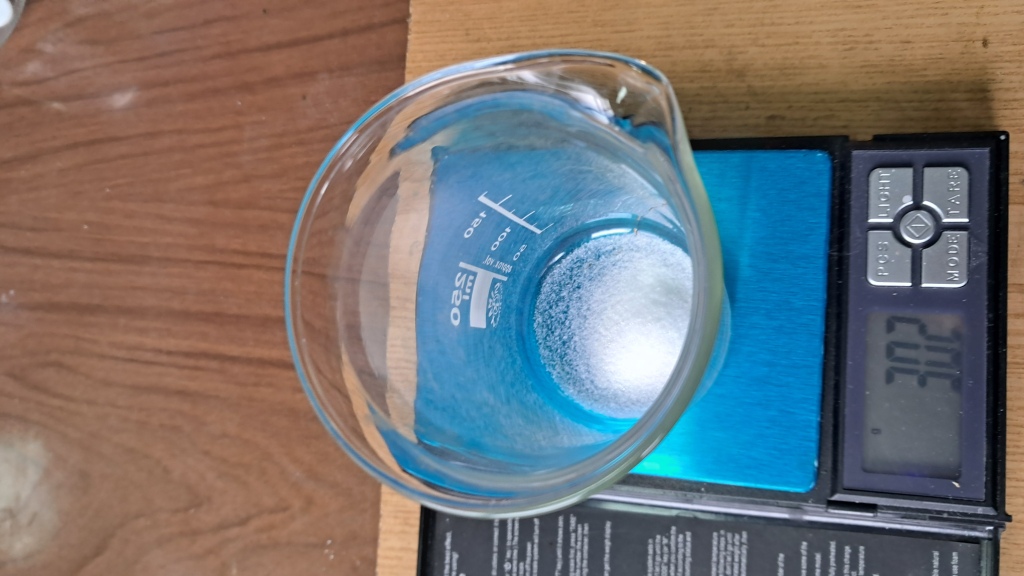
|

|

|
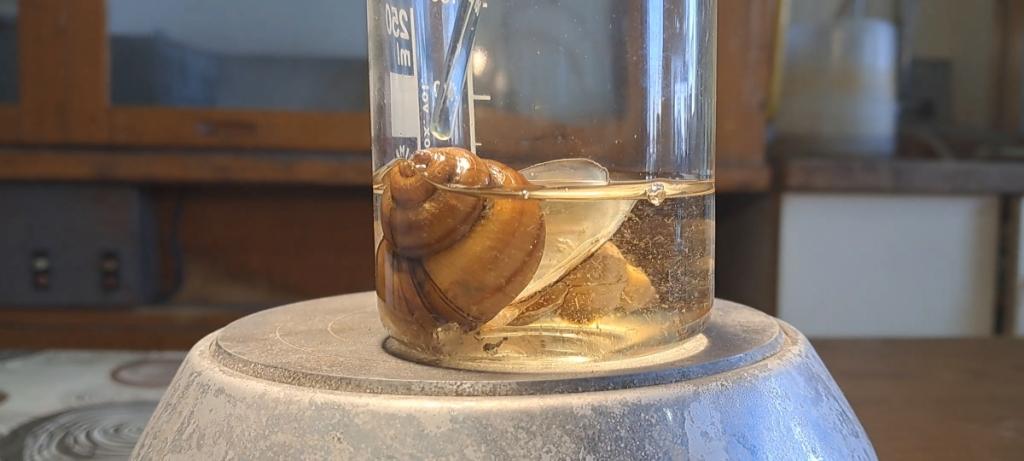
|
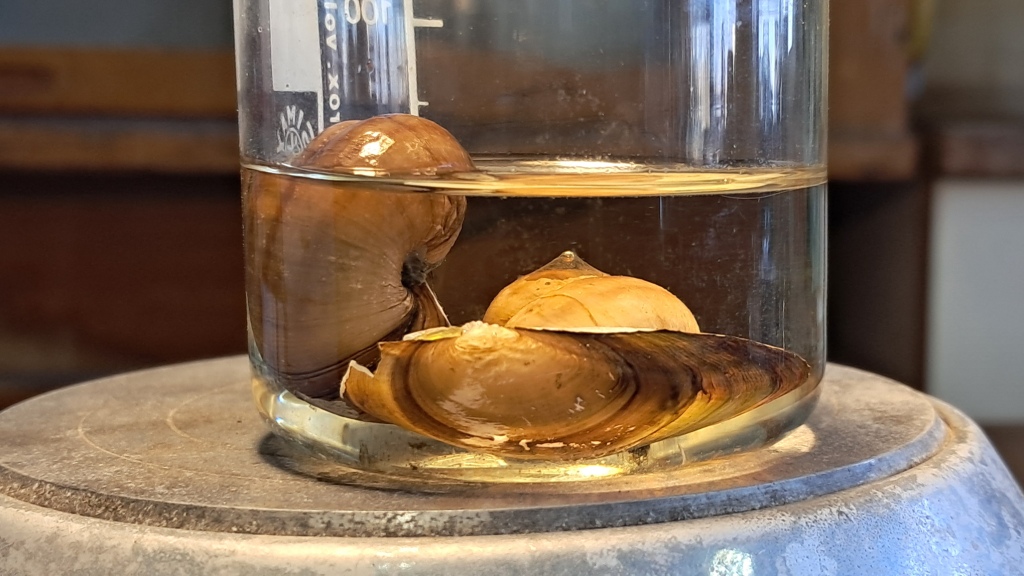
In 3 days |
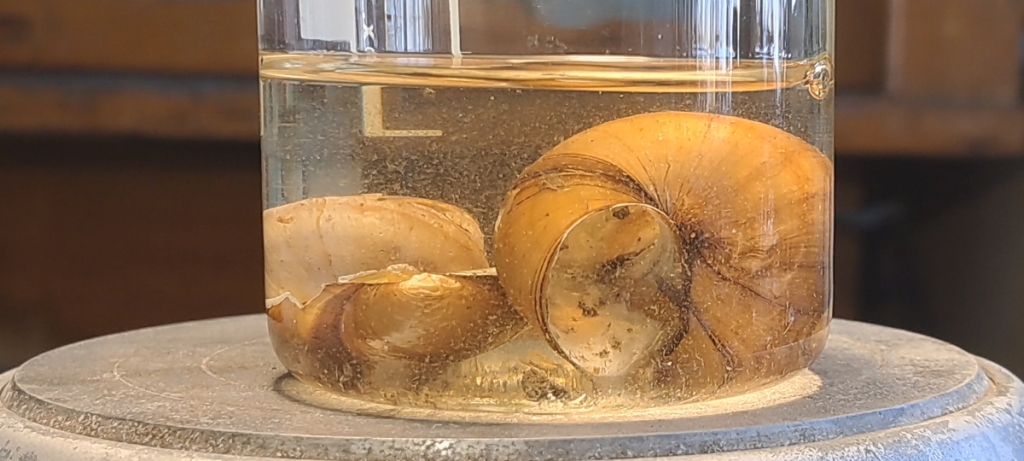
In 4 days |
|
Having noticed a mistake in the text, allocate it and press Ctrl-Enter
Disodium Salt of EDTA and Mollusk Shells - Part 2
So, why didn't the calcium carbonate dissolve in EDTA, and what should be done to make it dissolve?
Динатриевая соль EDTA и раковины моллюсков - Часть 2 While searching for an answer, I came across the website of an engineer specializing in heating systems [1]. The author described the following experiment. He added sodium hydroxide to a solution of disodium EDTA until the pH reached 9.1-9.2. He then added calcium carbonate to this solution and boiled it - yet the calcium carbonate did not dissolve. This result closely resembles the outcome of the experiment described in the first part of this article. Next, the author prepared a solution of disodium EDTA with a pH of 4.2-4.4, added calcium carbonate, and heated it. This led to the evolution of carbon dioxide, and most of the calcium carbonate dissolved. In this case, EDTA-2Na acted not only as a chelating agent but also as an acid, displacing the weak and volatile carbonic acid from its salt. I decided to repeat this experiment using the same mollusk shells that had failed to dissolve in EDTA in the previous test [2]. I poured 50 ml of water into a beaker, placed the mollusk shells in it, added 10 g of EDTA-2Na (*Trilon B*), and stirred. Most of the EDTA-2Na did not dissolve. A slight gas evolution was observed on the surface of the shells. I heated the beaker on an electric hotplate. The gas evolution increased markedly, and the EDTA-2Na gradually went into solution. Steam bubbles began to form as the solution boiled. The bubbles of steam were visually indistinguishable from bubbles of carbon dioxide produced by the reaction of calcium carbonate with EDTA-2Na. However, as soon as I removed the beaker from the hotplate, boiling stopped quickly, but carbon dioxide evolution continued. The shells began to dissolve. Small holes appeared in them and gradually widened. Over time, the reaction rate decreased. When heating stopped, it became evident that the evolution of carbon dioxide had almost ceased. I added another 3 g of EDTA-2Na, and vigorous carbon dioxide evolution resumed. I returned the beaker to the hotplate. Soon, one of the shells had nearly dissolved; then the reaction slowed again. I had to add another 3 g of EDTA-2Na and repeat this procedure several times. In total, I used 23 g of EDTA-2Na, which resulted in the complete dissolution of one shell and the substantial dissolution of another. The third shell only partially dissolved. What theoretical amount of EDTA is required to dissolve the shells? When forming a complex, Ca2+ and EDTA-2Na react in a 1:1 molar ratio. The molar mass of C10H14N2Na2O8·2H2O is 372.24 g/mol, and that of calcium is 40.08 g/mol. Therefore, 9.29 g of EDTA-2Na are required to bind 1 g of Ca2+ into a complex. However, in mollusk shells, calcium is not present as Ca2+ ions but as calcium carbonate, whose molar mass is 100.09 g/mol. Thus, to dissolve 1 g of calcium carbonate, 3.72 g of EDTA-2Na are theoretically required. In addition, shells consist not only of calcium carbonate but also of organic matter and other compounds, so the actual mass of EDTA-2Na required to dissolve 1 g of shell material should be lower. I did not think to weigh the shells before the experiment, but their total mass could not have exceeded a few grams. Complete dissolution did not occur even after adding 23 g of EDTA-2Na, indicating that a large excess of the reagent is required. Thus, mollusk shells do dissolve in disodium EDTA, but the process is slow and requires a considerable amount of EDTA-2Na. Consequently, this reaction is not well suited for chemical demonstrations intended for a live audience. Adding EDTA-2Na or EDTA-4Na to water in heating systems prevents scale formation. However, using EDTA-2Na to remove scale that has already formed on surfaces is impractical. For this purpose, hydrochloric acid with an inhibitor (hexamethylenetetramine) or sulfamic acid is employed. __________________________________________________ 1 https://tiwater.info/en/the-sodium-salt-of-edta-and-calcium-carbonate/ 2 While editing the video, I noticed that after the previous experiment, one of the mollusk shells had shown signs of partial dissolution, but this does not change the essence of the matter. Во время редактирования видео заметил, что после предыдущего эксперимента на одной из раковин моллюсков присутствовали признаки частичного растворения, но сути дела это не меняет. |
|
Динатриевая соль EDTA и раковины моллюсков - Часть 2
Итак, почему карбонат кальция не растворился в EDTA и что необходимо сделать, чтобы он растворился?
В процессе поиска ответа случайно наткнулся на сайт инженера, который занимается отопительными системами [1]. Автор проделал следующий эксперимент. К раствору динатриевой соли EDTA он добавил гидроксида натрия, чтобы рН раствора составлял 9.1-9.2. Затем добавил к этому раствору карбонат кальция и прокипятил - карбонат кальция не растворялся. Данный результат аналогичен результату нашего эксперимента, описанного в первой части статьи. Затем автор приготовил раствор динатриевой соли EDTA c рН = 4.2-4.4, добавил к нему карбонат кальция и нагрел. В результате выделился углекислый газ, большая часть карбоната кальция растворилась. В данном случае EDTA-2Na действовал не только как хелатообразователь, но и как кислота, вытесняя слабую и летучую угольную кислоту из ее соли. Я повторил данный эксперимент с теми же раковинами моллюсков, которые не растворились в EDTA в ходе предыдущего эксперимента [2]. Налил в стакан 50 мл воды, поместил в воду раковины моллюсков, добавил 10 г EDTA-2Na (Трилон Б) и перемешал. Большая часть EDTA-2Na не растворилась. С поверхности раковин наблюдалось слабое выделение газа. Нагрел стакан на электроплитке. Выделение газа значительно усилилось, осадок EDTA-2Na постепенно растворился. Началось выделение пузырьков пара - раствор закипал. Пузырьки пара, которые образуются при кипении, внешне неотличимы от пузырьков углекислого газа, который образуется в результате реакции карбоната кальция с EDTA-2Na. Однако, стоило снять стакан с плитки - кипение быстро прекращалось, а выделение пузырьков углекислого газа продолжалось. Раковины стали растворяться - в них появились отверстия, которые постепенно расширялись. Однако, со временем реакция замедлилась. Когда я снял стакан с плитки, кипение прекратилось, и стало очевидно, что выделение углекислого газа почти не происходило. Добавил еще 3 г EDTA-2Na - активное выделение углекислого газа возобновилось. Снова поставил стакан на электроплитку. Вскоре одна из раковин моллюсков почти растворилась, затем реакция снова замедлилась. Пришлось добавить еще 3 г EDTA-2Na. Данную процедуру повторил несколько раз. Суммарно израсходовал 23 г EDTA-2Na, добавившись полного растворения одной раковины моллюсков и преимущественного растворения другой. Третья раковина растворилась лишь частично. Какой теоретический расход EDTA необходим для растворения раковин моллюсков? При образовании комплекса, Ca2+ и EDTA-2Na реагируют в молярном соотношении 1 : 1. Молярная масса C10H14N2Na2O8·2H2O равна 372.24 g/mol, а молярная масса кальция - 40.08 g/mol. Следовательно, для связывания в комплекс 1 г Ca2+ необходимо 9.29 г EDTA-2Na. Однако, кальций в раковинах моллюсков присутствует не в форме катиона Ca2+, а в виде карбоната кальция, молярная масса которого 100.09 g/mol. Для растворения 1 г карбоната кальция теоретически необходимо 3.72 г EDTA-2Na. Кроме того, раковины состоят не только из карбоната кальция - также они содержат органические вещества и другие соединения, поэтому теоретическая масса EDTA-2Na, необходимая для растворения 1 г материала раковин, еще меньше. Я не догадался взвесить раковины моллюсков перед реакцией, но их масса не превышала нескольких грамм. Полного растворения этих раковин после добавления 23 г EDTA-2Na не произошло, следовательно, для этого необходим значительный избыток данного реагента. Таким образом, раковины моллюсков растворяются в динатриевой соли EDTA, но реакция занимает много времени и требует значительного расхода EDTA-2Na. Следовательно, данный процесс плохо подходит для проведения химических демонстраций перед аудиторией. Добавление EDTA-2Na или EDTA-4Na в воду отопительных систем предотвращает образование накипи. Однако, использование EDTA-2Na для очистки поверхностей от уже образовавшейся накипи нецелесообразно. Для этой цели применяют соляную кислоту с ингибитором (уротропин) или сульфаминовую кислоту. |
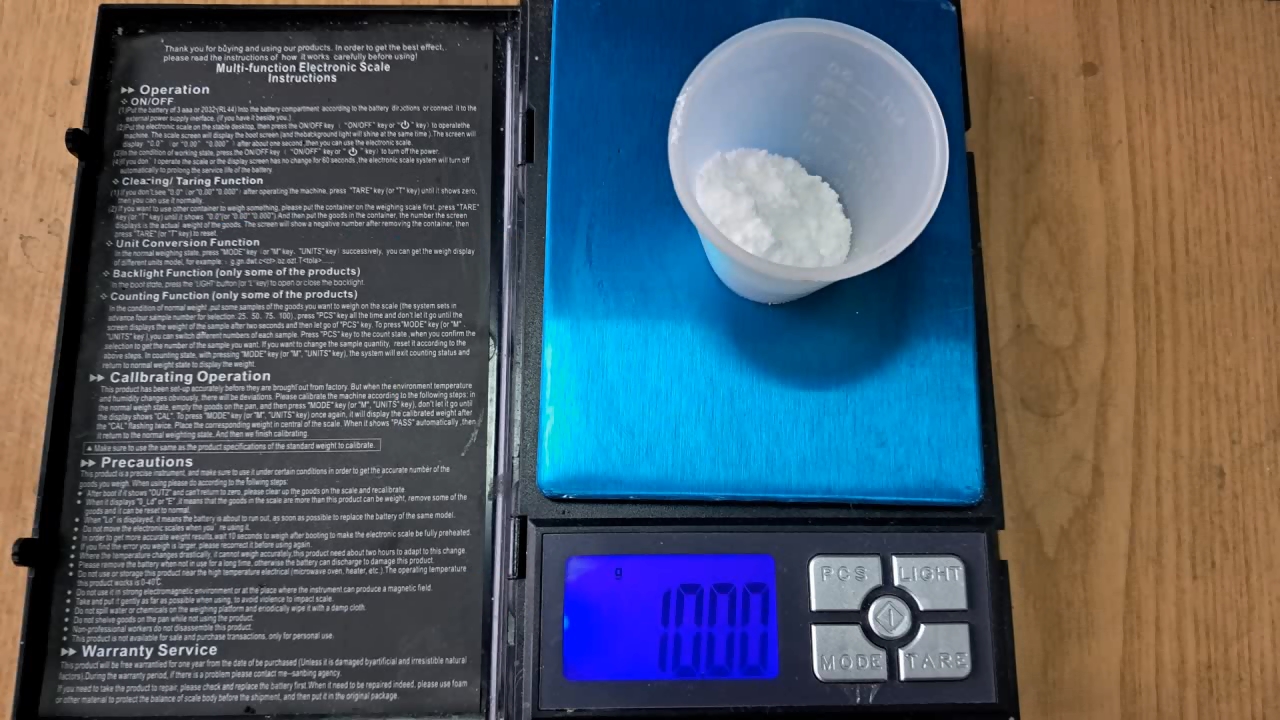
Disodium Salt of EDTA and Mollusk Shells |
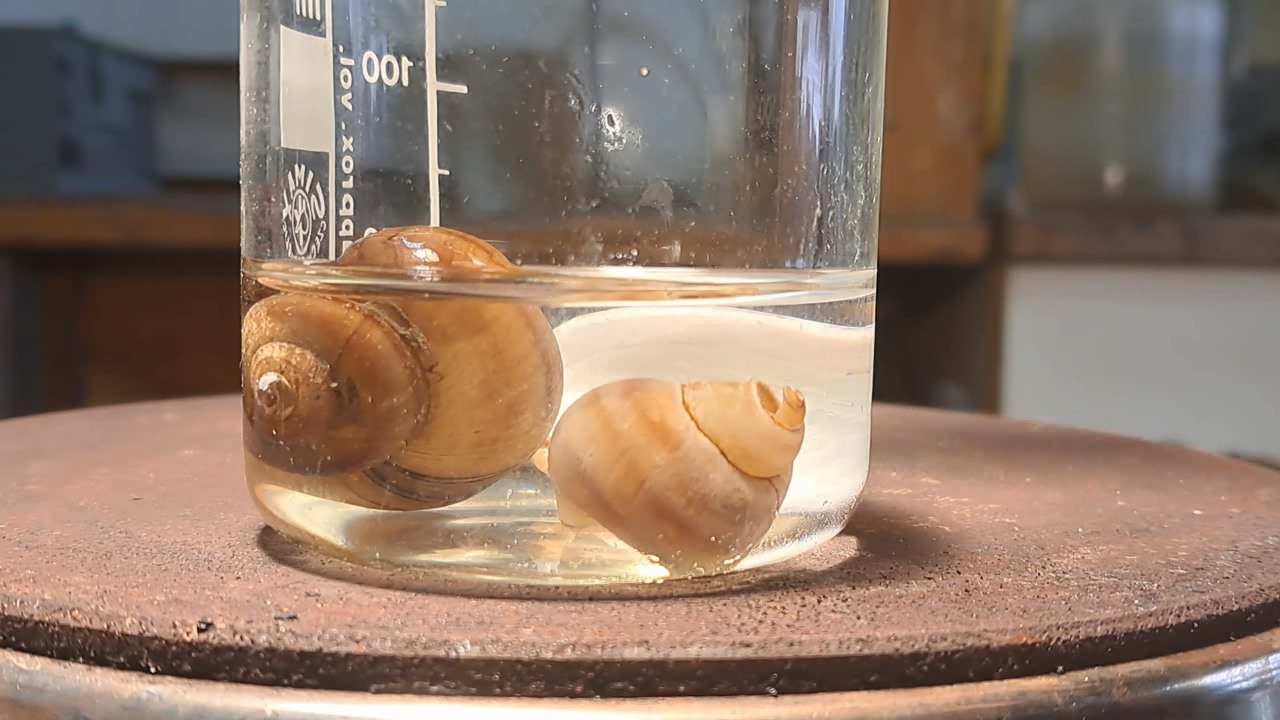
|

|
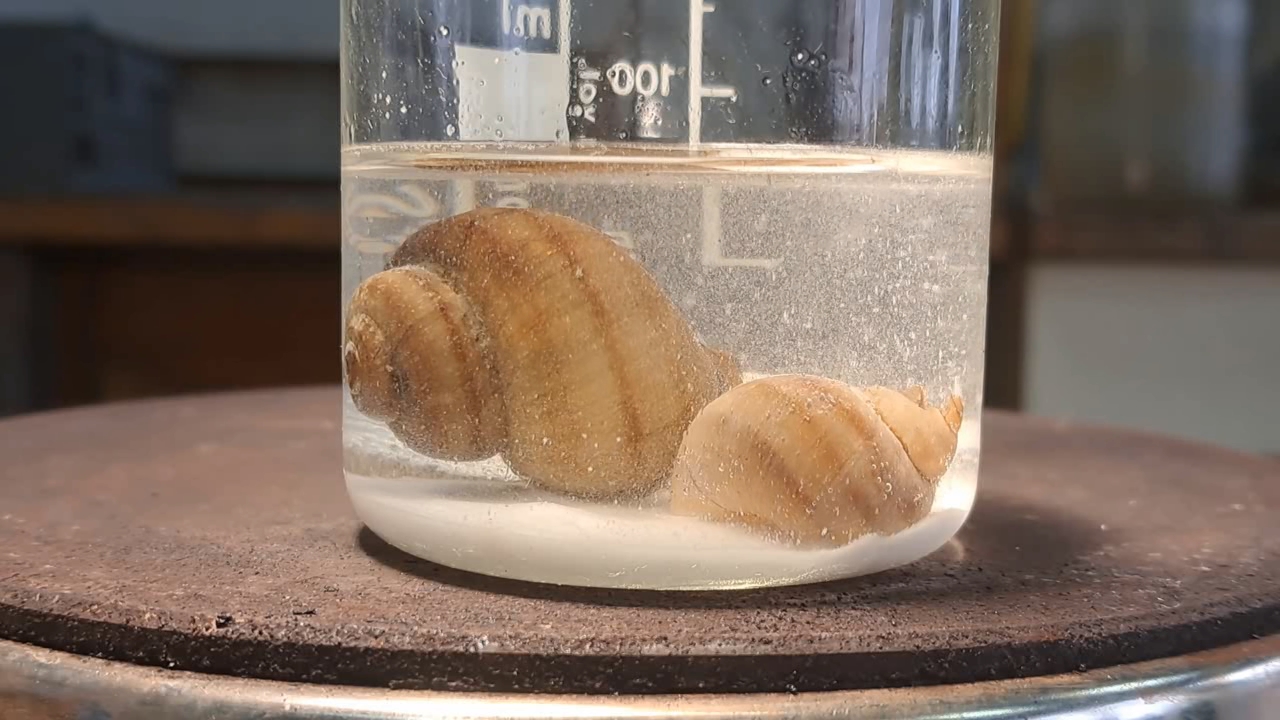
|
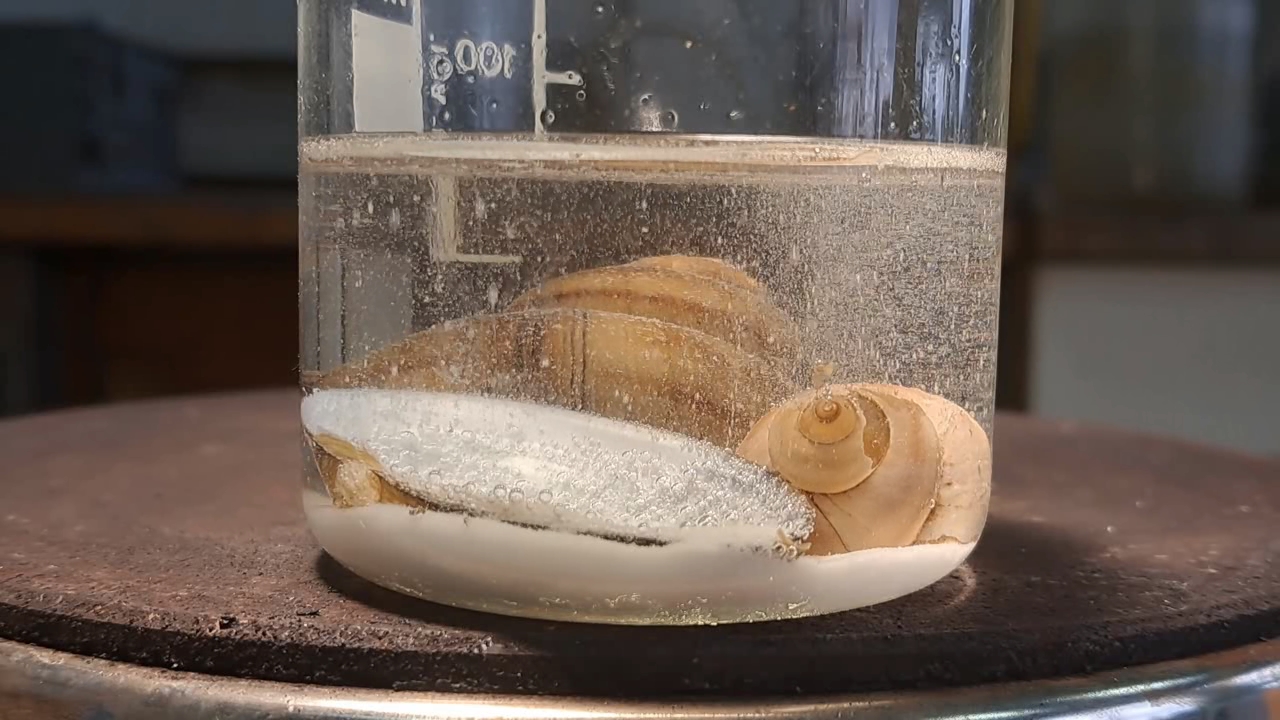
|
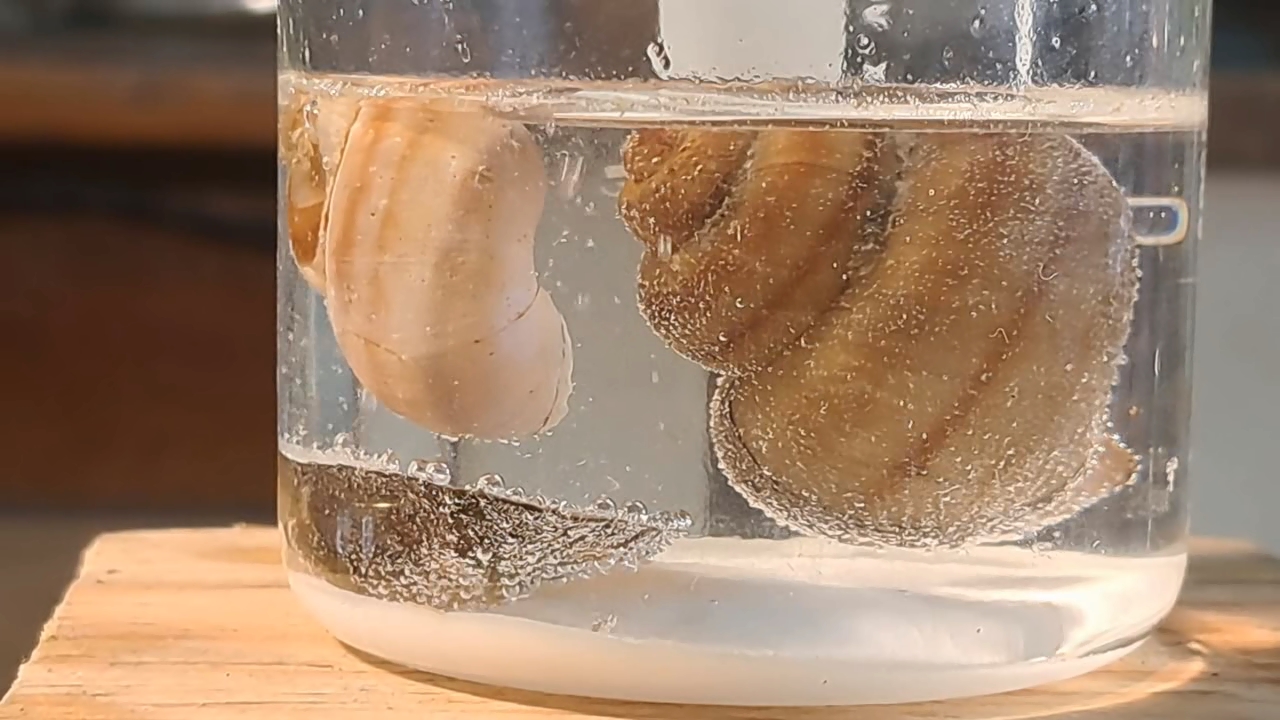
|
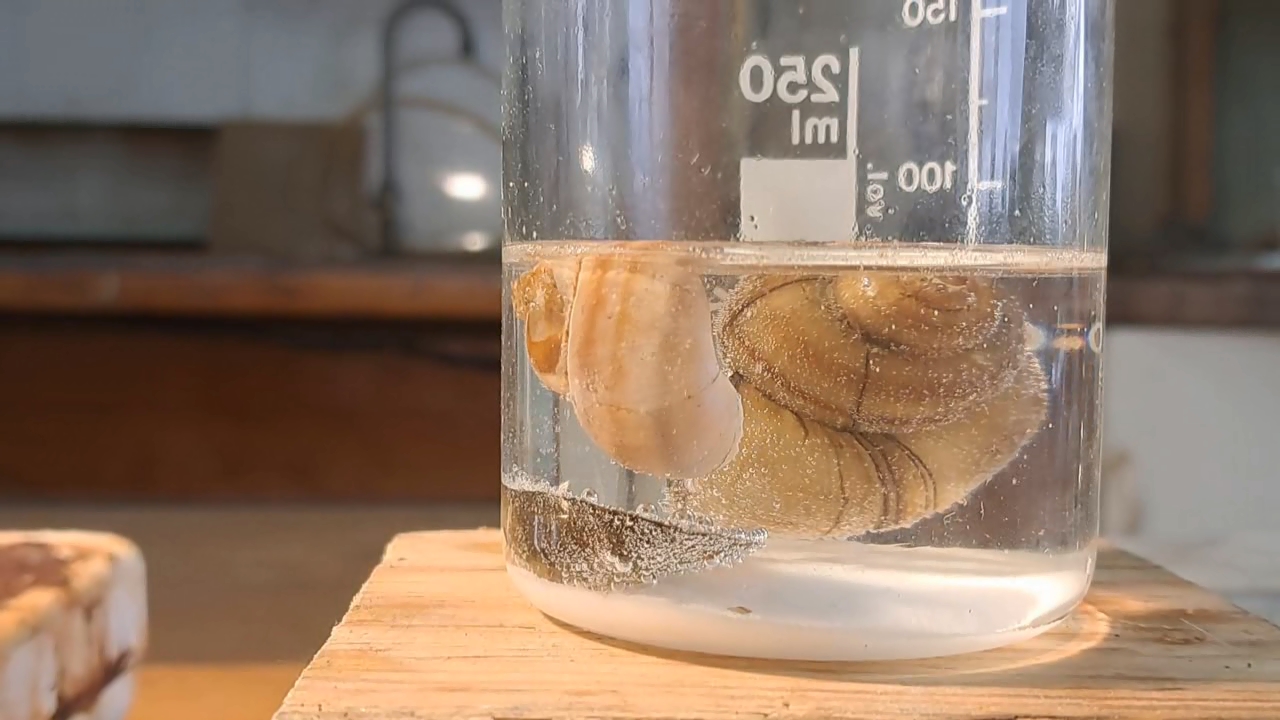
|
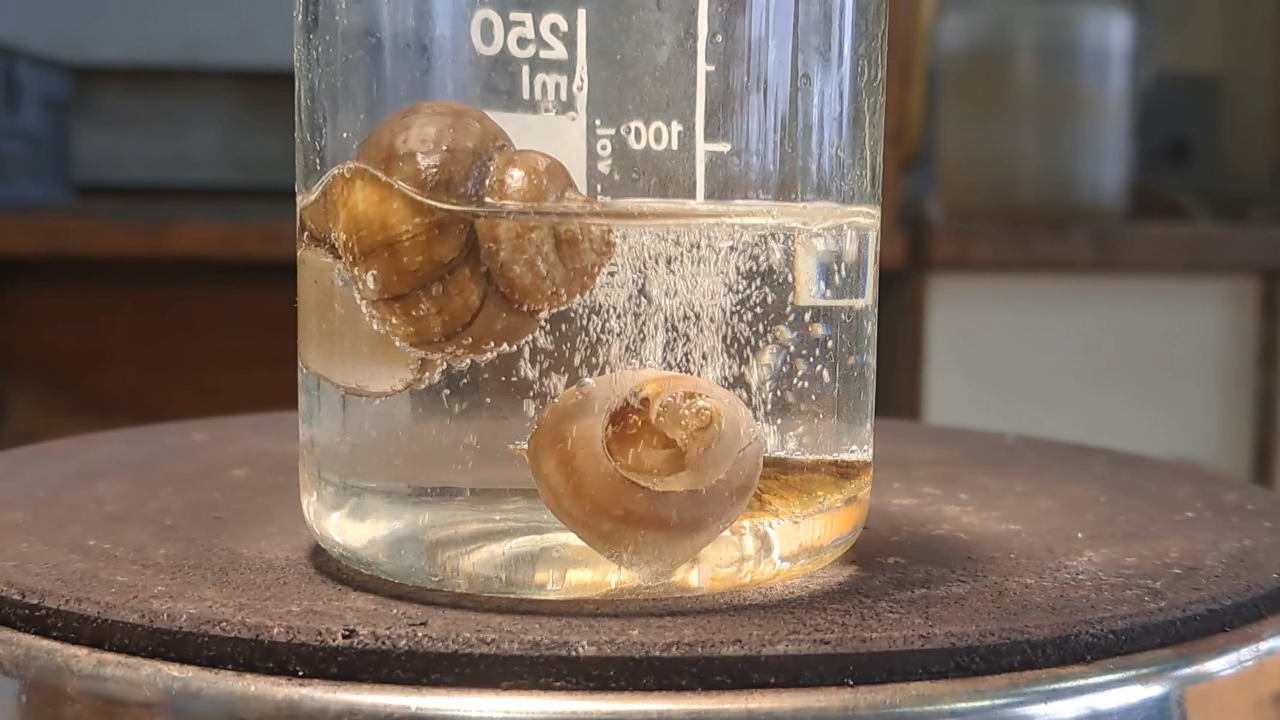
|
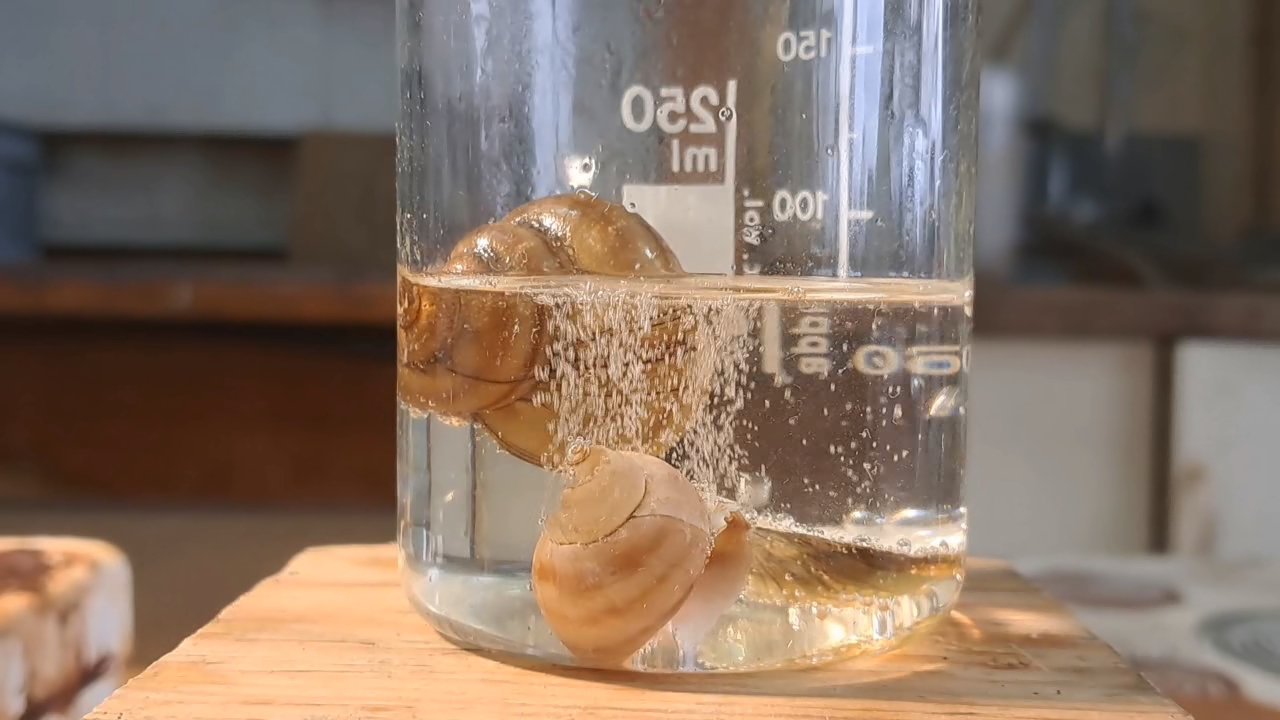
|

|

|
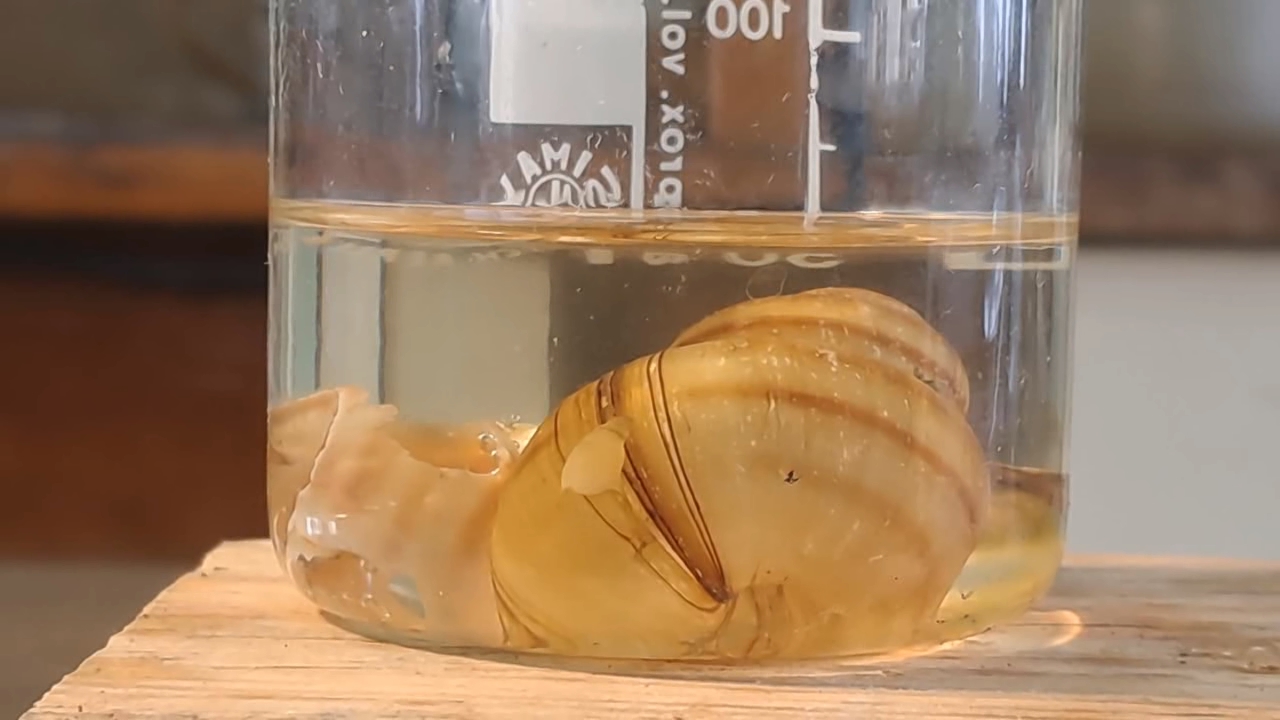
|

|
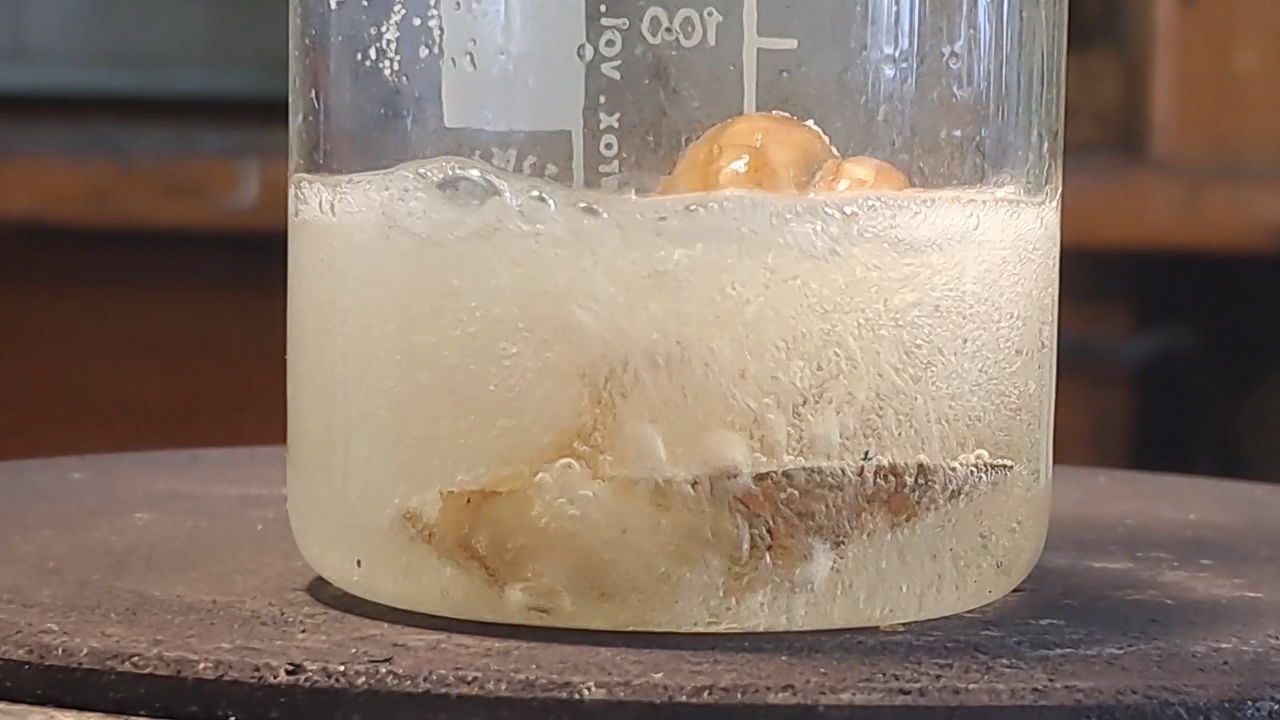
|

|
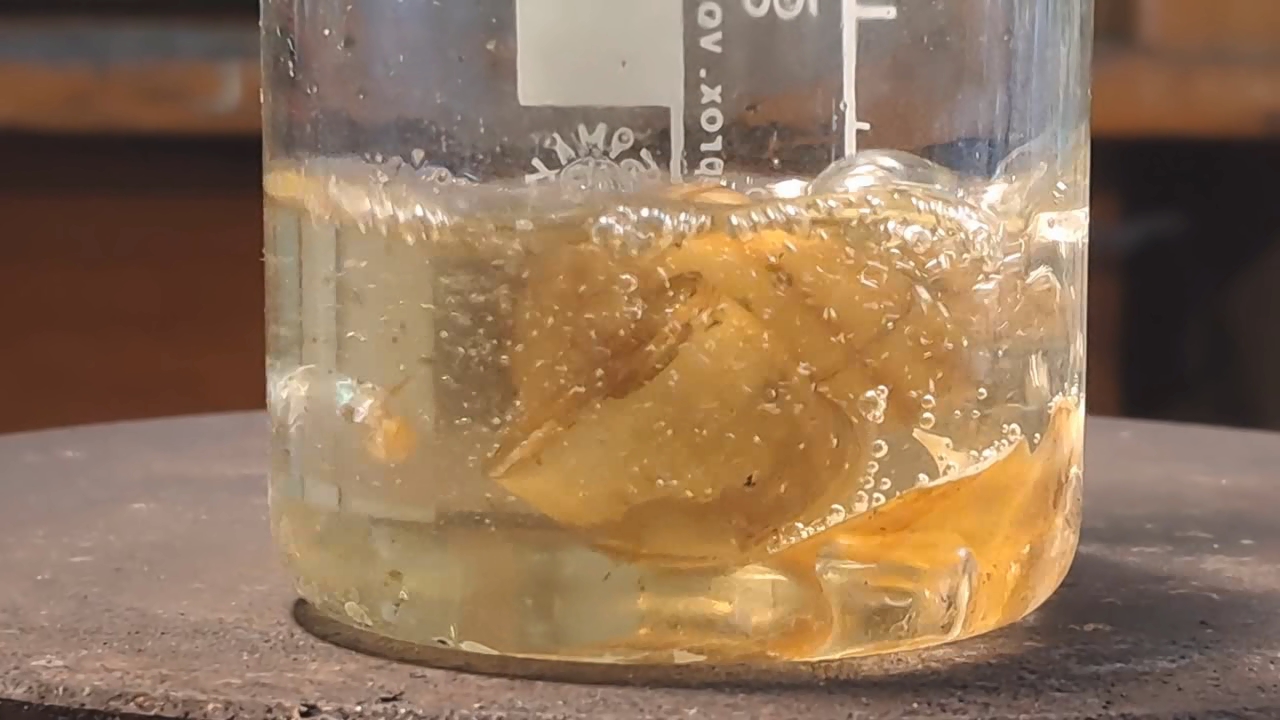
|
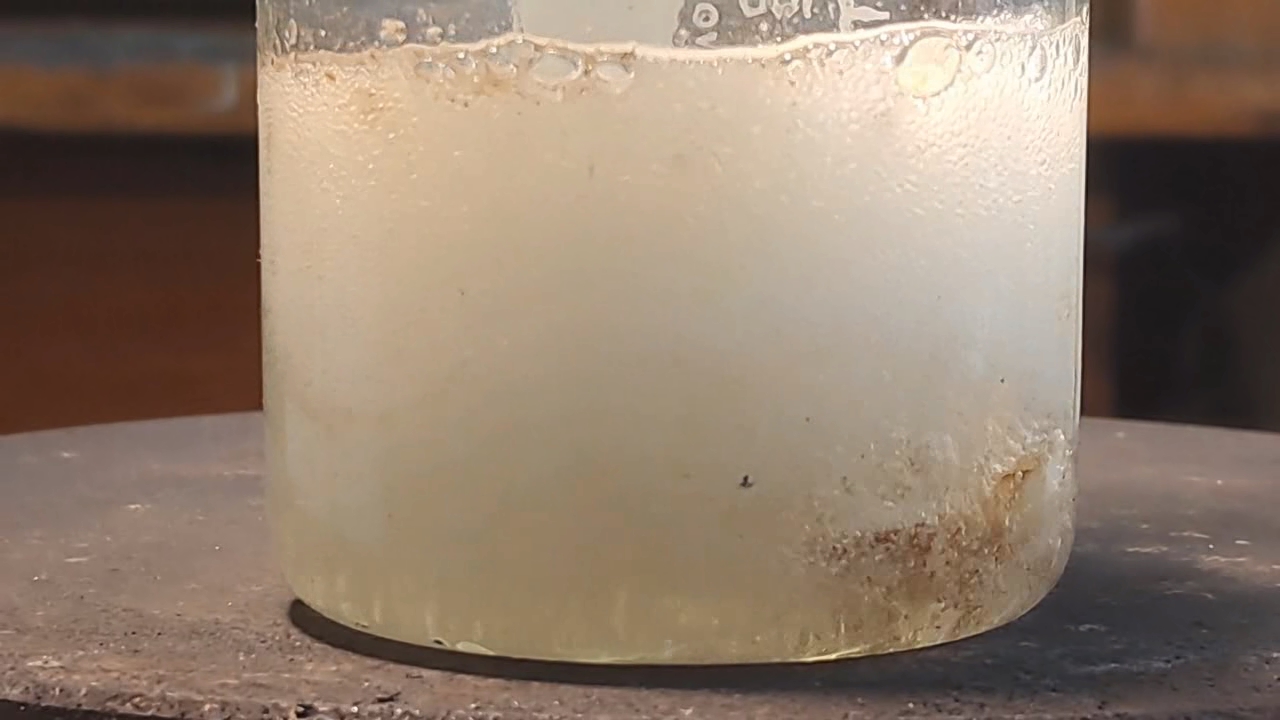
|

|

|
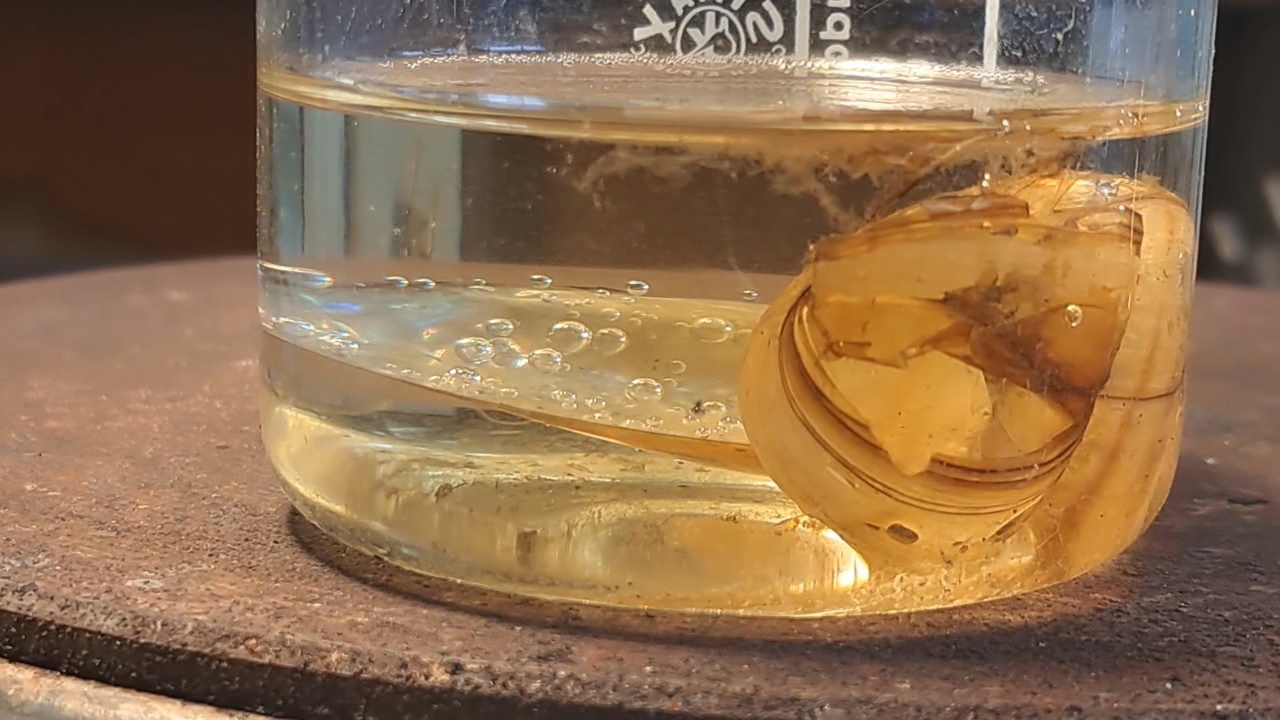
|

On the next day |
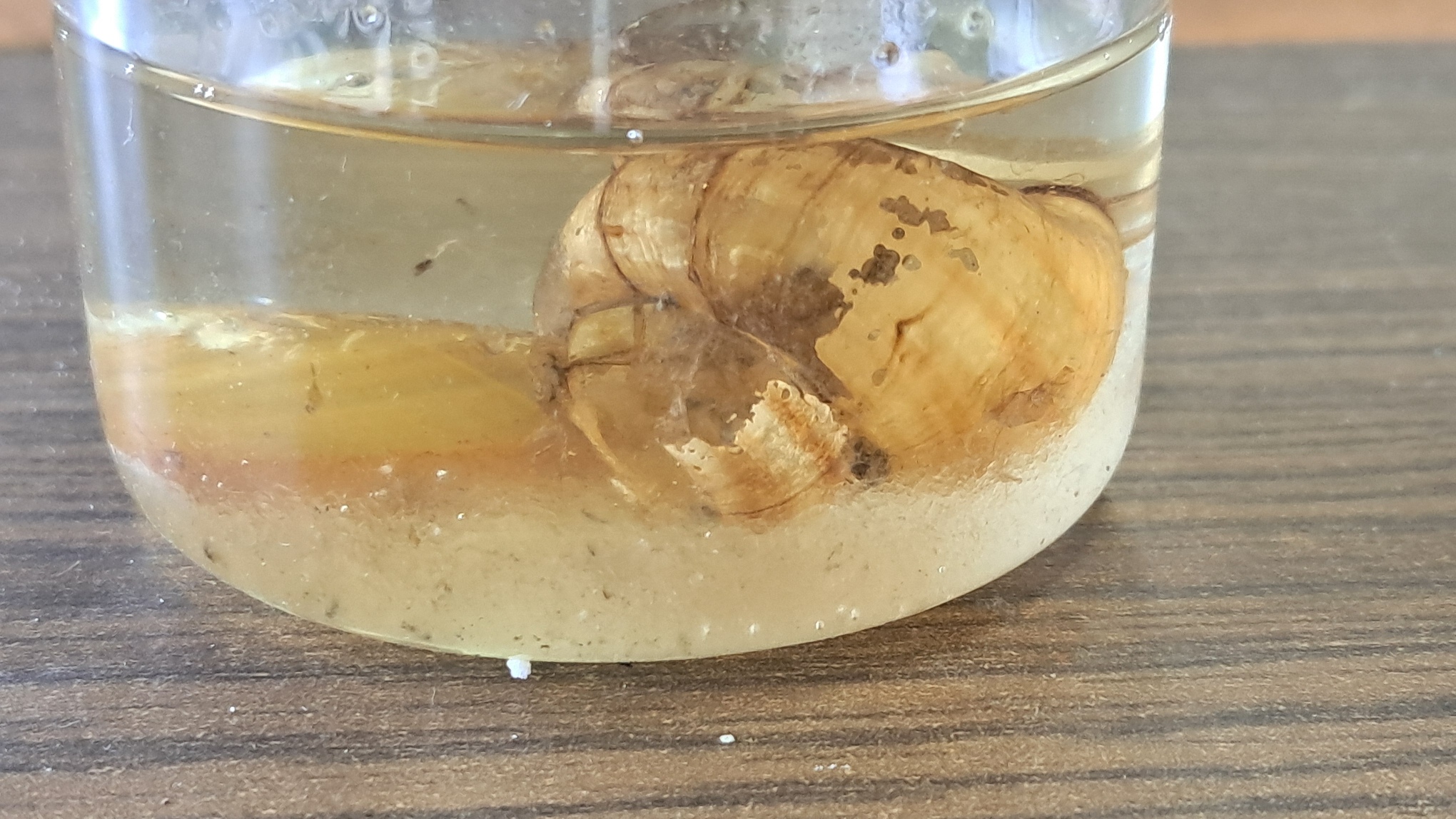
|
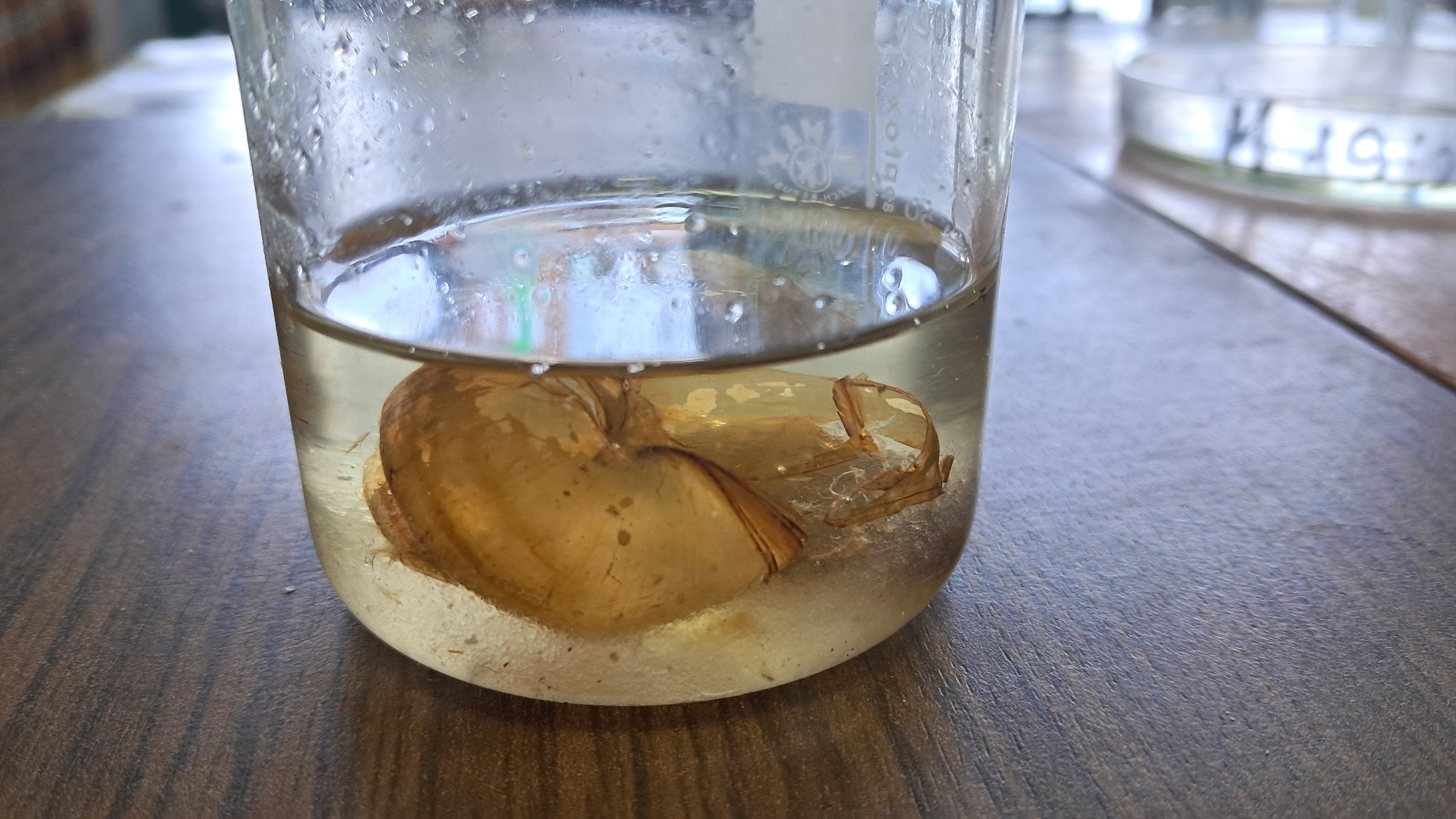
|
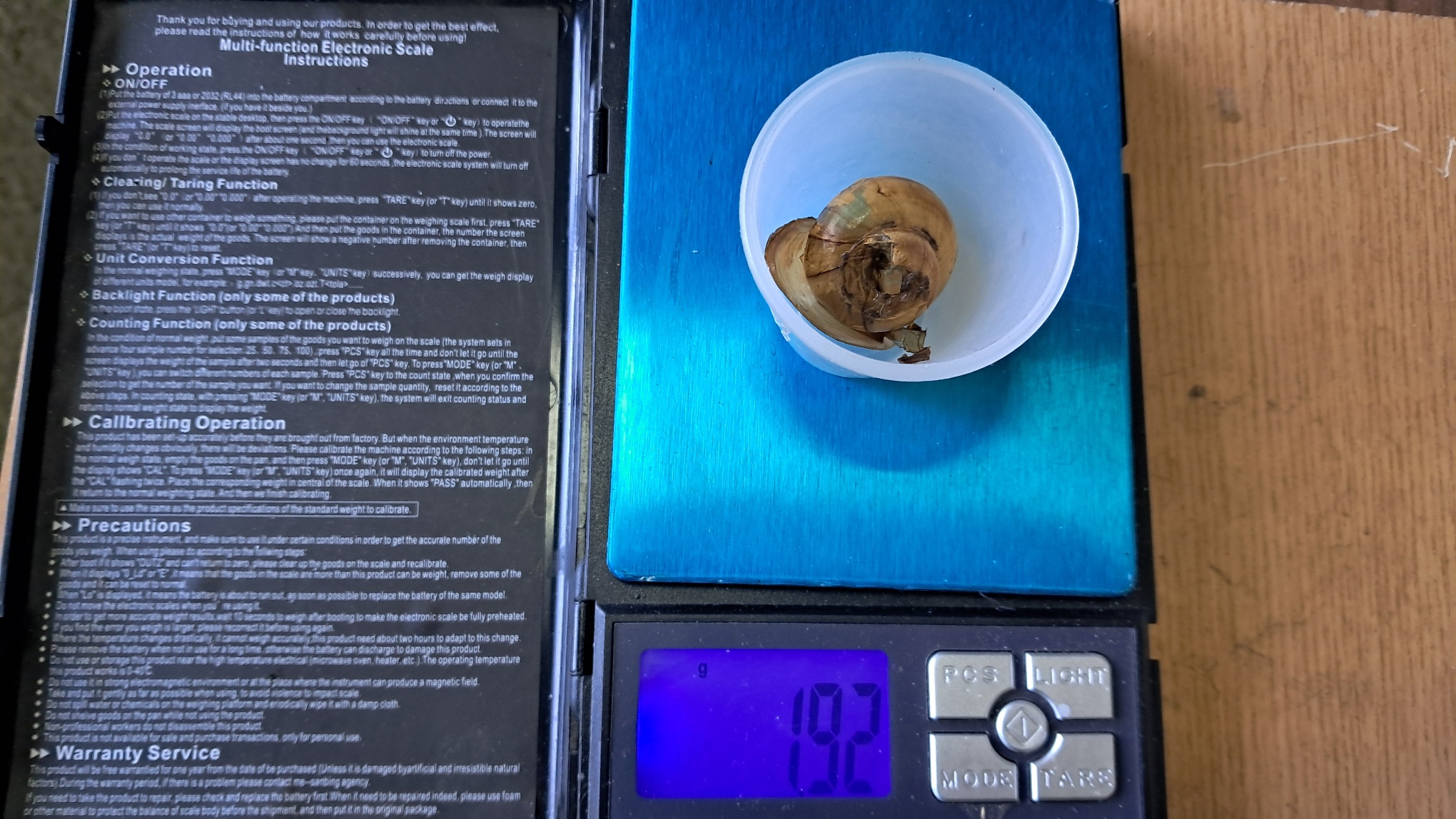
|